A claim that a rise in earthquakes of a magnitude of six or more points to impending catastrophic climate changes is FALSE.
A post on Facebook claims that seismic activity is increasing, exponentially so in the case of magnitude six earthquakes. It adds that the same is happening to magnitude seven earthquakes and that this is all attributed to climate change.
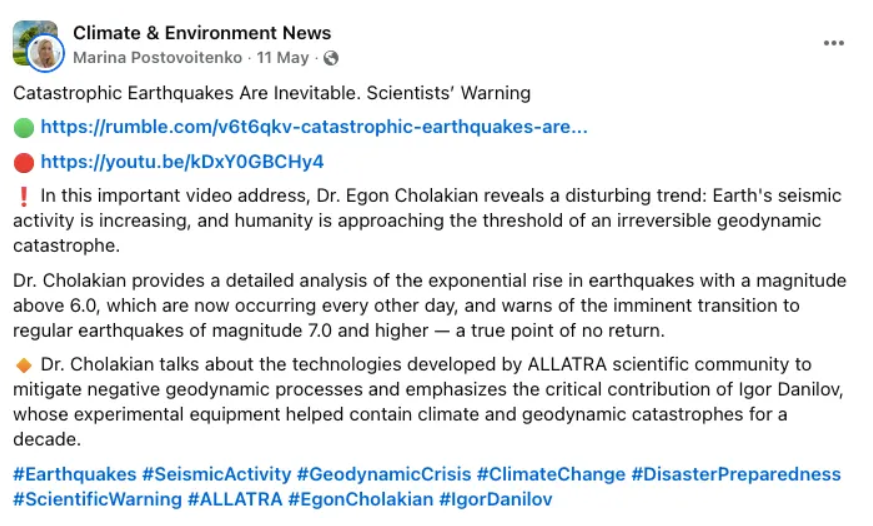
The Allatra Movement, cited in the post, often attributes seismic and volcanic activity to cyclical climate changes.
However, PesaCheck has previously debunked such claims, showing that climate change is unrelated to Earth’s orbit or solar activity.
The video also predicts a catastrophic earthquake, but scientists agree that earthquakes, regardless of magnitude, cannot be predicted (here, here and here).
So, are large earthquakes becoming more frequent, and are they linked to climate change?
Most earthquakes result from friction in the Earth’s crust caused by the movement of tectonic plates. At fault lines, where two plates meet, energy builds up due to their jagged edges, eventually releasing as seismic activity.
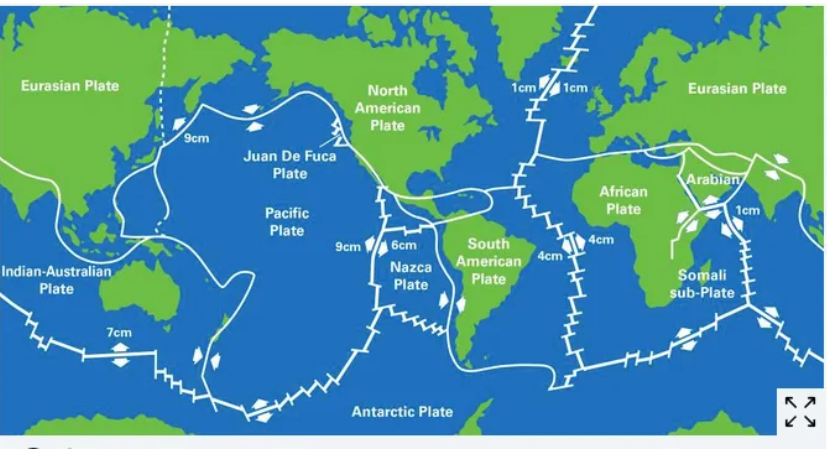
The Earth’s tectonic plates. (Credit: British Geological Survey)
Given sufficient force, the friction is overcome and the energy is released in seismic waves circling from the epicentre, which shakes the ground and everything on it.
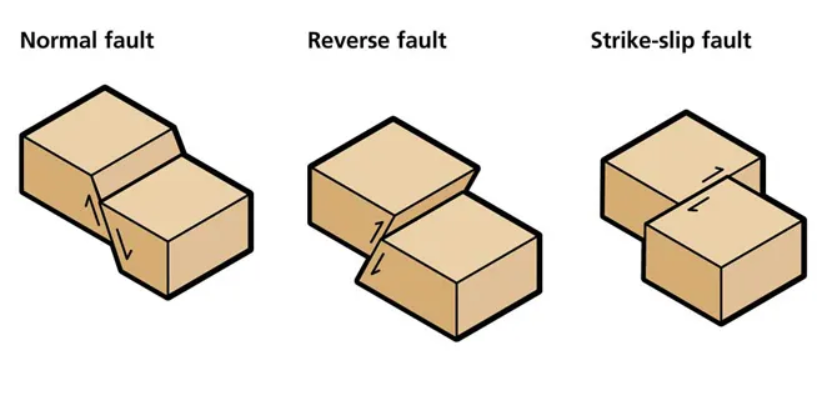
Examples of faults and the friction between them. (Credit: British Geological Survey)
Volcanoes can cause earthquakes because the eruption of magma causes rocks to crack and release energy similar to tectonic earthquakes. Volcano-induced earthquakes are weak and often not detectable.
Earthquakes can rarely be induced by human activity. More than 80 per cent of the 1,200 recorded human-induced earthquakes were caused by mining, oil and gas extraction, water reservoir impoundment or hydraulic fracturing.
Earthquake magnitudes are measured on a logarithmic scale, meaning moving up a number equates to an earthquake many times more powerful. Earthquakes are traditionally measured using the Richter Scale. The Moment Magnitude Scale is used for accurate measurements of very strong earthquakes.
Get PesaCheck’s stories in your inbox
Join Medium for free to get updates from this writer.
Subscribe
According to data from the United States Geological Survey (USGS), large earthquakes have remained stable since 1990.
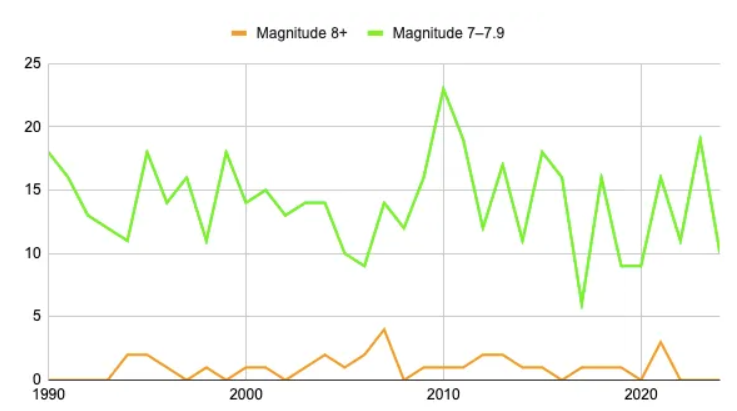
The number of recorded earthquakes per year from 1990 to 2024 for magnitude 7 to 7.9 (green) and magnitude 8 and up (yellow). (Data credit: USGS)
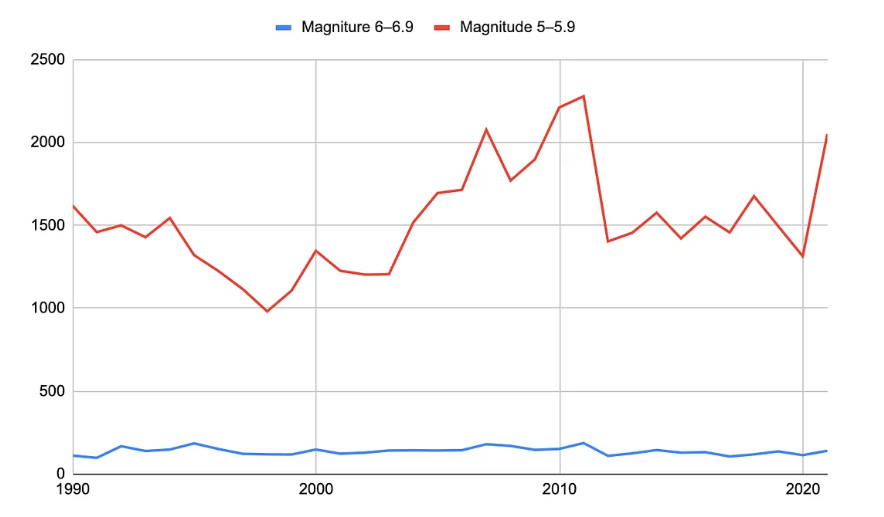
The number of recorded earthquakes per year from 1990 to 2021 for magnitude 5 to 5.9 (red) and magnitude 6 to 6.9 (blue). (Data credit: USGS)
No earthquake above magnitude eight has been measured since 2021. Millions of small earthquakes happen yearly, but a magnitude eight and above earthquake is rare and is referred to as a “great earthquake”.
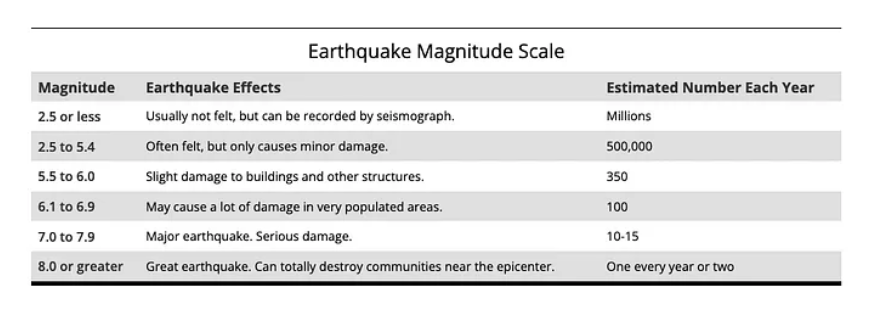
(Credit: Michigan Tech)
Other data support this trend: earthquakes of magnitude five and above showed no significant increase between 2000 and 2023. Long-term data from 1900 to the present also reveals no notable rise in seismic activity in recent years.
Volcanic eruptions and earthquakes are not driving rapid global warming or climate change. While earthquakes can occasionally trigger volcanic eruptions, they are not linked to current climate trends.
There is no evidence that earthquakes affect the weather, but the opposite can sometimes induce a fault slip. Contrary to the claim, very large volcanic eruptions can have a cooling effect on temperatures.
On the other hand, greenhouse gas emissions have unequivocally caused global warming and climate change. This has increased severe weather, drought, flooding (including in Libya), and displacement.
PesaCheck has examined a claim that magnitude six earthquakes are increasing, pointing to a climate catastrophe, and finds it to be FALSE.
. . .
This post is part of an ongoing series of PesaCheck fact-checks examining content marked as potential misinformation on Facebook and other social media platforms.
By partnering with Facebook and similar social media platforms, third-party fact-checking organisations like PesaCheck are helping to sort fact from fiction. We do this by giving the public deeper insight and context to posts they see in their social media feeds.
Have you spotted what you think is fake or false information on Facebook? Here’s how you can report. And, here’s more information on PesaCheck’s methodology for fact-checking questionable content.
This fact-check was written by PesaCheck climate change fact-checker Christiaan van der Merwe and edited by PesaCheck chief copy editor Stephen Ndegwa.
The article was approved for publication by PesaCheck’s managing editor Doreen Wainainah.









